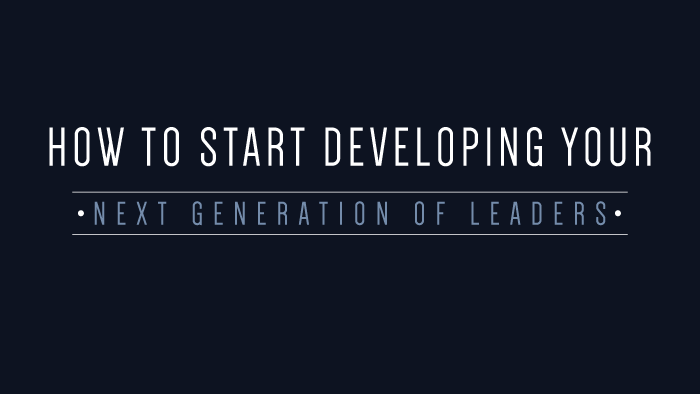What Is a High-Potential Employee?
Different companies have different definitions of high-performing employees (HIPOs). However, in general a HIPO is in good standing in their role but also shows skills that would be necessary for a managerial or leadership role too. These individuals take initiative and possess leadership skills.
How Are High Potentials Different from High Performers?
The term high-potential employee is often used synonymously with high-performing employees, but there is a difference. The main difference between these two types of employees is that a high-performing employee may excel in their role and have a desire to move up, but they don’t have natural leadership skills, the desire to learn the skills, or just don’t want to lead.
Many companies only promote top performers into management positions, but high performers don’t always make the best leaders since the responsibilities are very different. That’s why it’s important to identify high-potential employees as well.
Mistaking a high-performing employee for a high-potential employee can be costly. If an organization is unable to distinguish the difference between performance and potential, it will have difficulty hiring and retaining talent.
An example of this is a top performer in sales is promoted to sales manager, and they struggle to transition from killing sales goals to helping a team kill theirs. This not only takes the manager away from a position they excelled in, but can frustrate the employees and drive turnover.
How to Identify High-Potential Employees
Now that we know how detrimental it can be to mistake a high performer for a HIPO, how do you spot the difference? Here are some common traits of high-potential employees:
Driven to succeed: HIPOs not only care about their career success, but also the success of the company. High performers strive for great work, but a HIPO aims even higher. Rather than just doing what they need to do, HIPOs look at the entire business and sees how their contributions contribute to the overall success of the company.
Takes initiative: Just being driven to succeed isn’t good enough. High potentials take initiative, they don’t wait around to be told what to do. HIPOs are eager to learn and take on more work. Innovation helps get your company ahead.
Pro tip: Make sure HIPOs aren’t taking on too much and becoming overworked. Guide your managers to take time to chat about this in one-on-one meetings.
Willingness to take on new projects: HIPOs have the desire to take on additional responsibilities and tasks they aren’t necessarily responsible for. HIPOs view these as opportunities to grow and learn new skills from experiences.
Manages stress: These employees are ready for whatever is thrown their way, and they are resilient. HIPOs tend to shine in high-stress situations, which is a great quality for a leader to have. They see challenging situations as growth opportunities and don’t walk away when the going gets tough.
Desire to lead: Not everyone has the desire to move up and lead a team. Some employees are content with the status quo. Not everyone is cut out to be a leader. Instead of looking for obvious candidates for leadership roles based on performance alone, consider individual contributions, and their personality traits.
Check out this infographic for tips on preparing younger workers for leadership positions:
Benefits of Identifying HIPOs
Recognizing who is high potential in your organization has benefits for both parties involved.
Committed & Engaged
Employees that feel like they have a career path within the company have been recognized for all their hard work are more likely to stay with your company. High potentials want to have a plan of where they are headed and how they will get there.
Fast Learners
High potentials are used to going above and beyond, and that’s likely how they got to where they are today. They learn fast, which means they don’t require as much training. This can save the company money.
Ability to Mentor Other HIPOs
HIPOs receive increased opportunities, but they can also help develop others. HIPOs can help identify and develop potential in others. They have the insight and experience necessary to develop more high potentials and grow the talent pool.
Succession Planning
Developing high potentials can help with your company’s succession planning as well. Having employees in-house that can step up to the plate when a higher level position opens greatly reduces the costs of hiring a new employee.
How to Develop High Potentials to Retain Talent
Once your company has identified high potential employees, you now want to develop and retain them. So, how do they fit within your organization’s plans?
Succession Planning
Managers should start by having a conversation with their respective HIPOs about their interests and where they’d like to go within their careers. As an organization, think about developing these high potentials for succession planning. Is your company expanding, or is a leader leaving or retiring soon? If so, this is the perfect opportunity to promote from within, if there is a HIPO with the correct background for the job.
Skills Assessment
Instead of jumping to fill positions because a high-potential employee seems like they would be a good leader, make sure their personality and skills match the position. In a management position, having a strong understanding of various soft skills is necessary to lead a team. A soft skills assessment can help illuminate areas where improving the manager’s skills can greatly improving the team’s performance . The assessment also shows which skills the HIPO is proficient in, so they can better understand how to share those skills with their team.
Comprehensive Online Learning to Build New Managers’ Leadership Skills
Research from Capterra suggests most businesses aren’t doing enough to prepare their new managers, with 40% of managers reporting that they received less than two hours of managerial training.
Two hours of training for one of the most important positions in a company isn’t enough, and effective management means a lot for your business – good managers can increase productivity by as much as 50% while struggling managers can increase turnover by 60%!
The transition from peer to leader can be difficult for new managers, but BizLibrary’s online learning solutions can help provide consistent training tools that make a massive difference in managers’ results. Microlearning from BizLibrary covers all the topics a first-time manager needs to be successful, and with these short, interactive videos, your employees can find time to learn in between the everyday tasks that help your business function.
Topics that clients have found helpful include: interviewing skills, conflict resolution, and learning to coach. Our award-winning content library features over 9,000 courses, many of which are focused on developing new leaders’ skills.
Assign More Responsibility
Another great way to test high potentials is by assigning more projects with higher responsibility. See how they perform with less instruction or by co-managing a team. Move employees into stretch assignments across departments, give them cross-assignments into new territories, or put them in a new realm of the business. HIPOs like to succeed. Push them, and expect them to produce.
Network & Job Shadow
Employees can’t expect to just land in an executive position. Managers should encourage their HIPOs to network, keep their name on the brain of current leaders and executives within the company. A great way the employee can do this is by asking to job shadow or sit in on meetings.
Give HIPOs Coaching & Feedback
High-potential employees tend to work harder and bring more value to organizations. As an HR or learning and development professional, your priority should be to retain HIPOs by making sure they are happy, fulfilled, and successful. One of the best ways to do that is by instructing your managers on giving feedback and coaching.
Coaching and feedback help the employee improve; this can be through building strengths, improving resilience, exploring new ways of doing things, or asking for help.
Current managers can use the content library to develop their coaching skills before helping develop the HIPOs.
View the preview of our Coaching Overview course below. Learners should be able to improve their coaching so their employees will be high performing and stay engaged in the work they’re doing.



